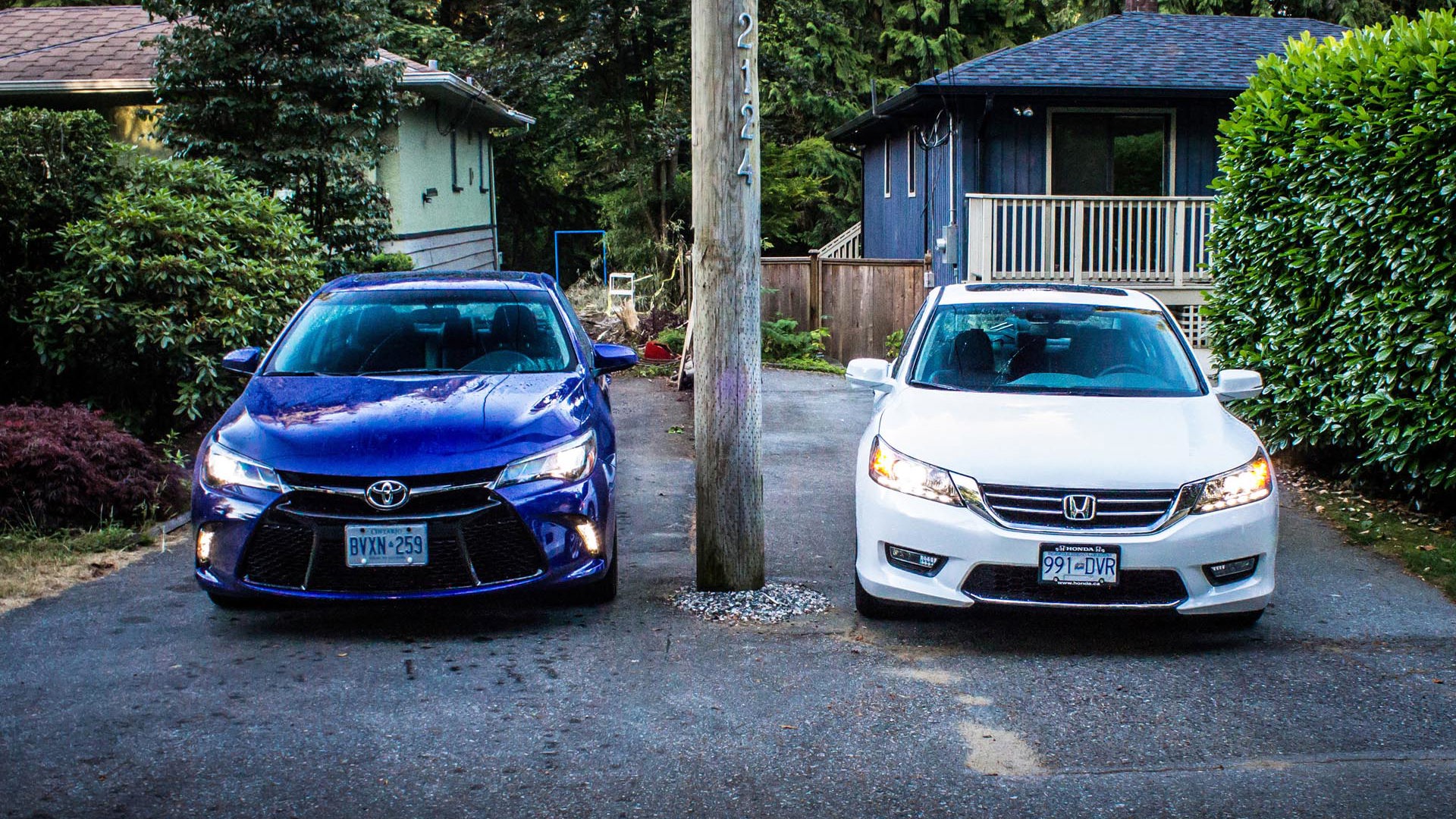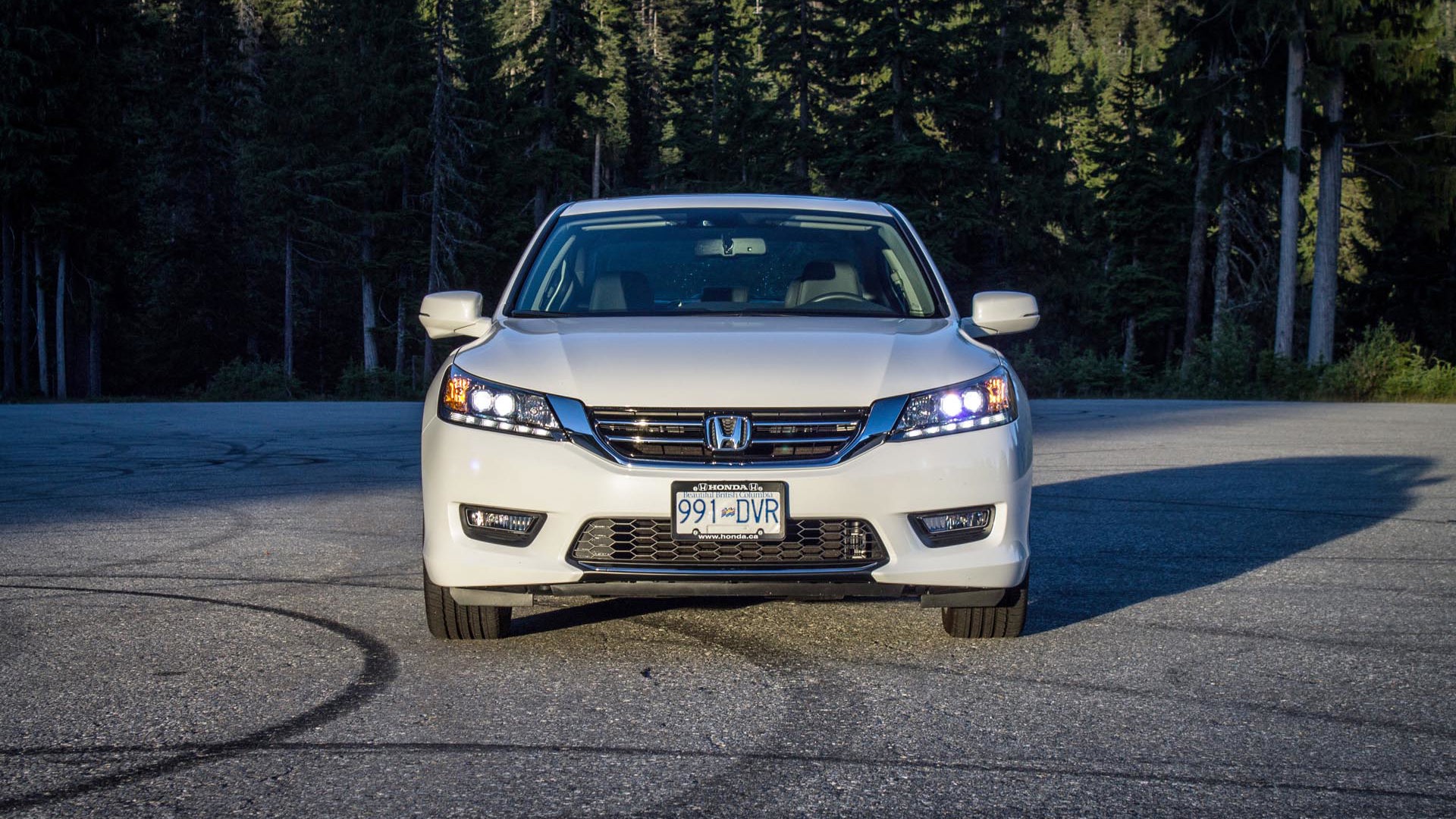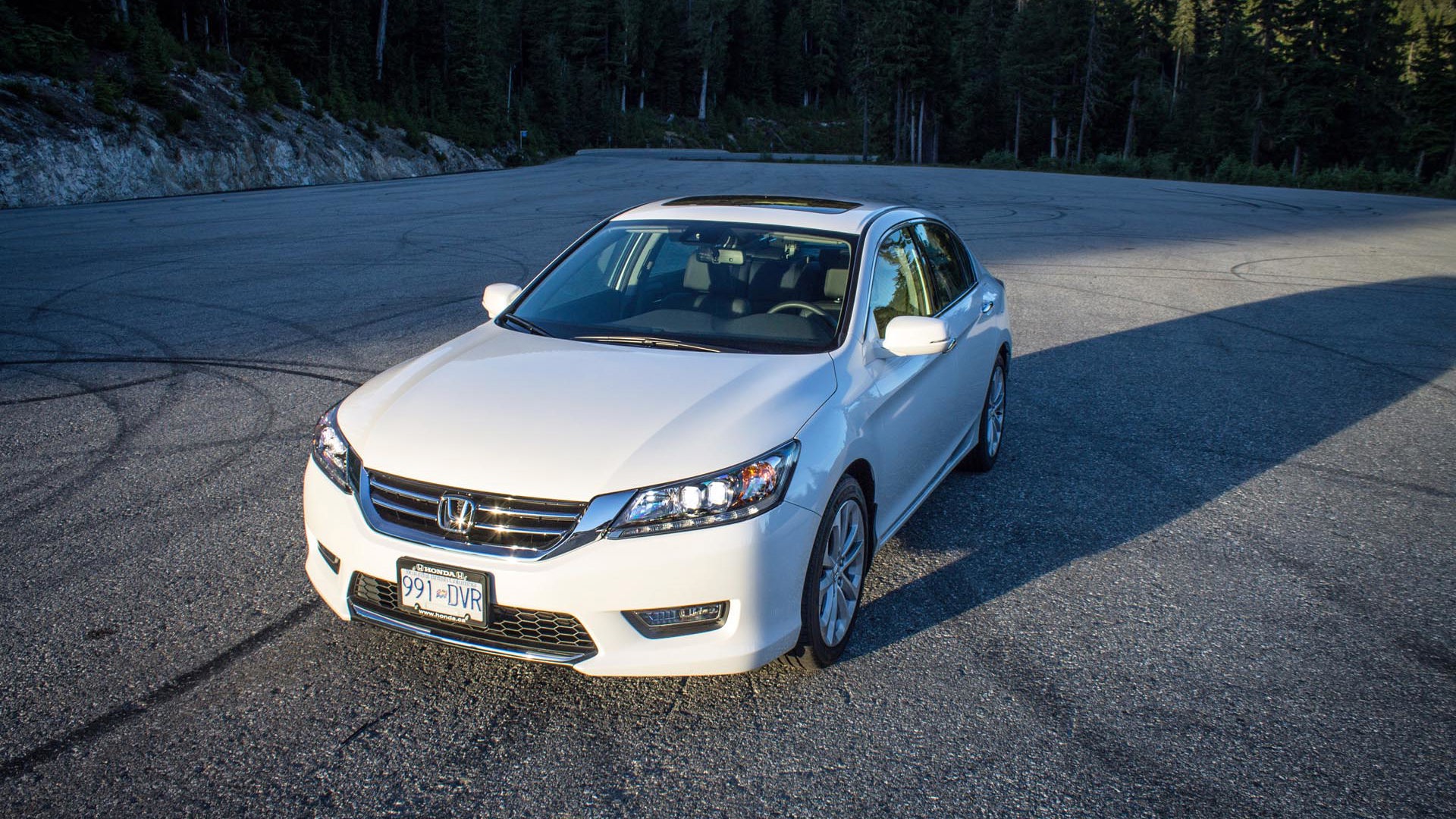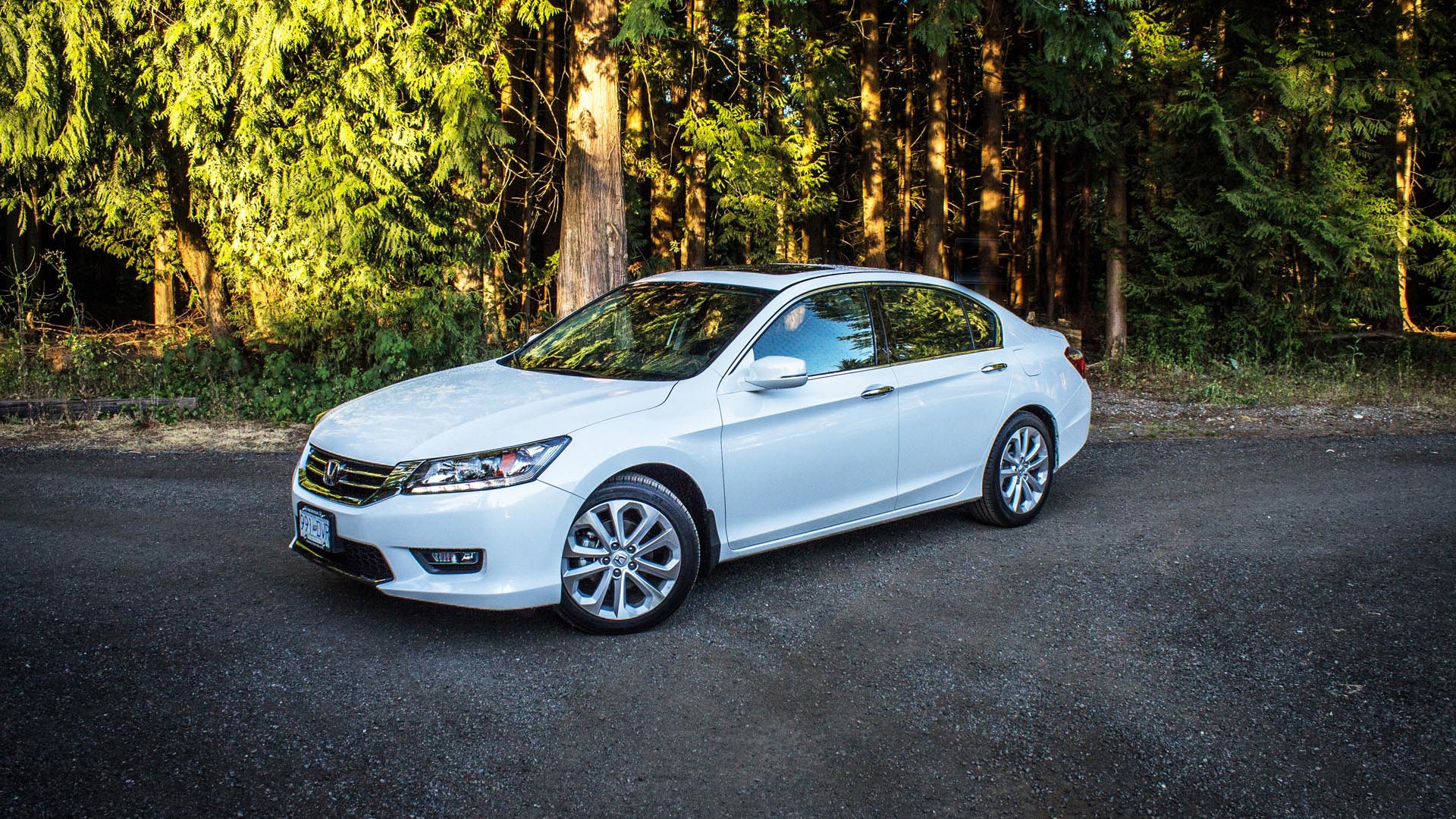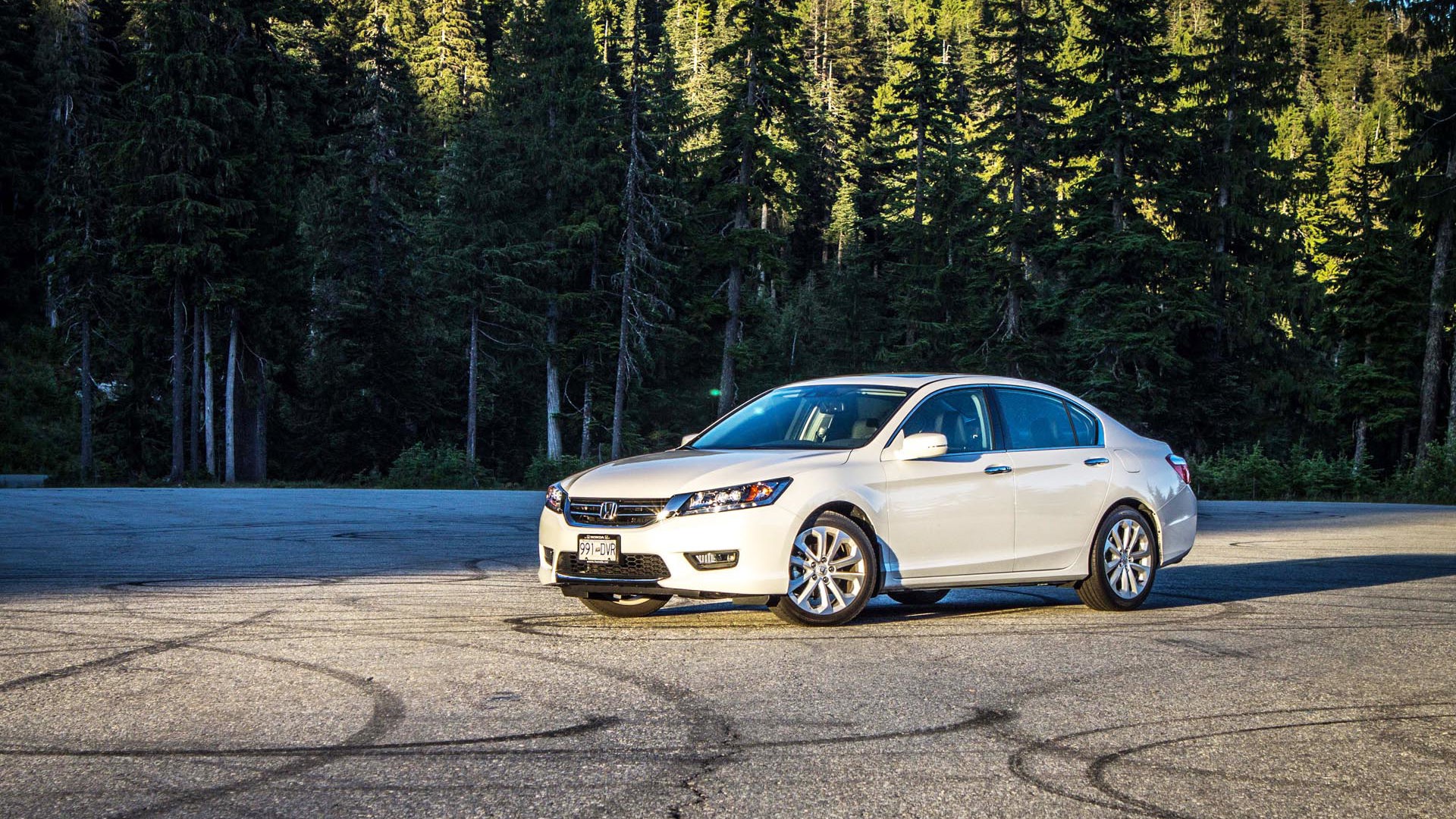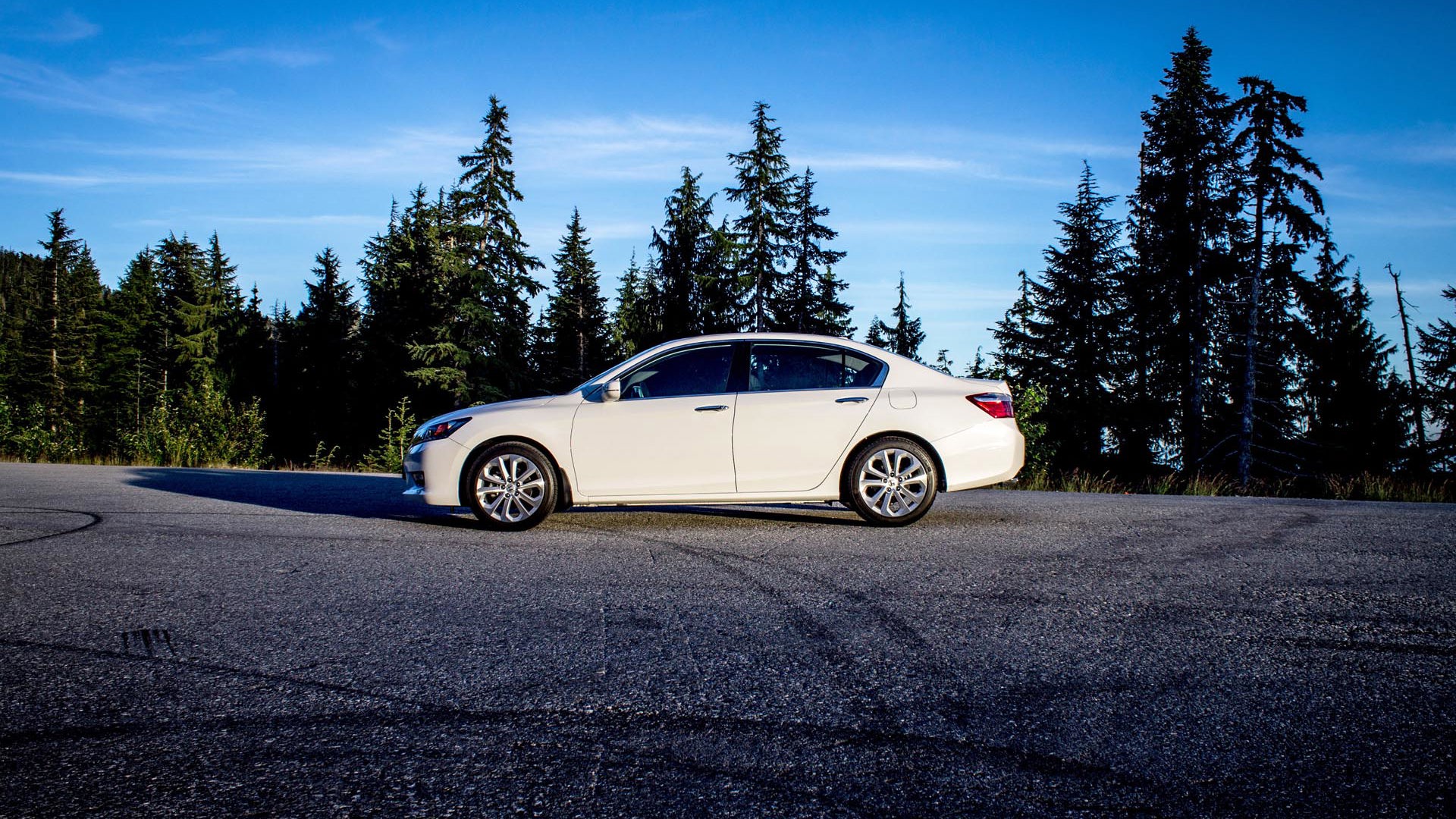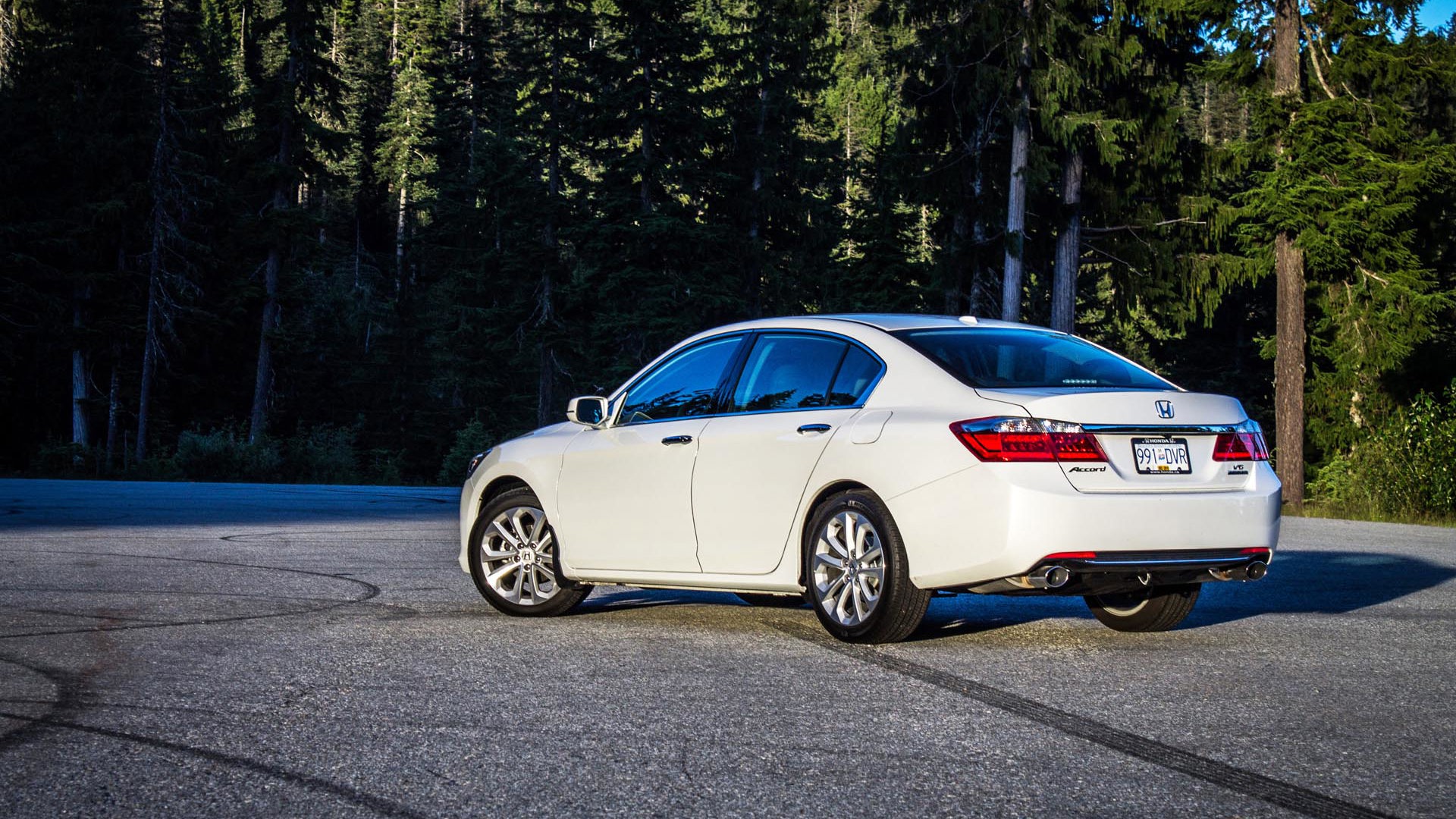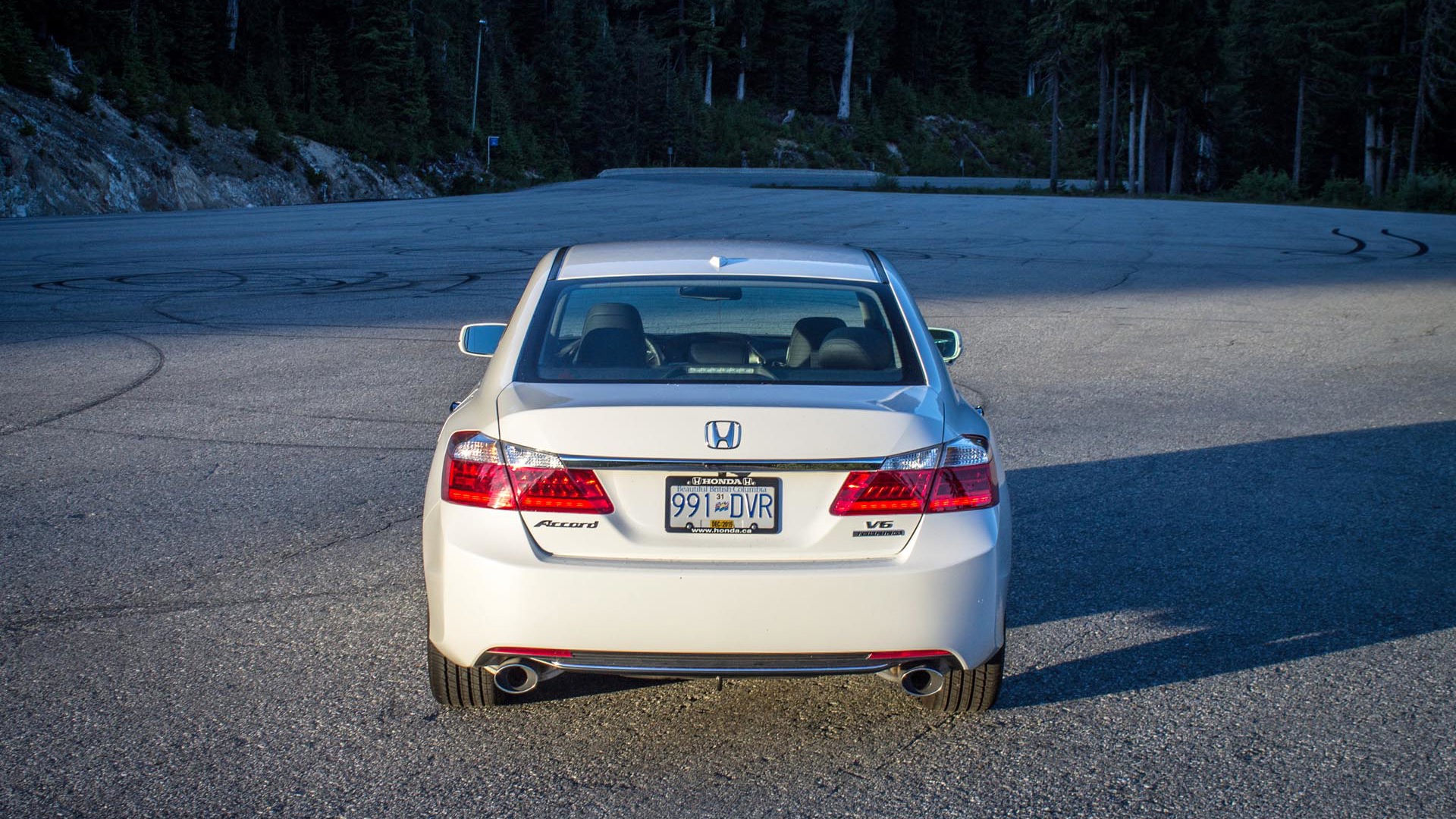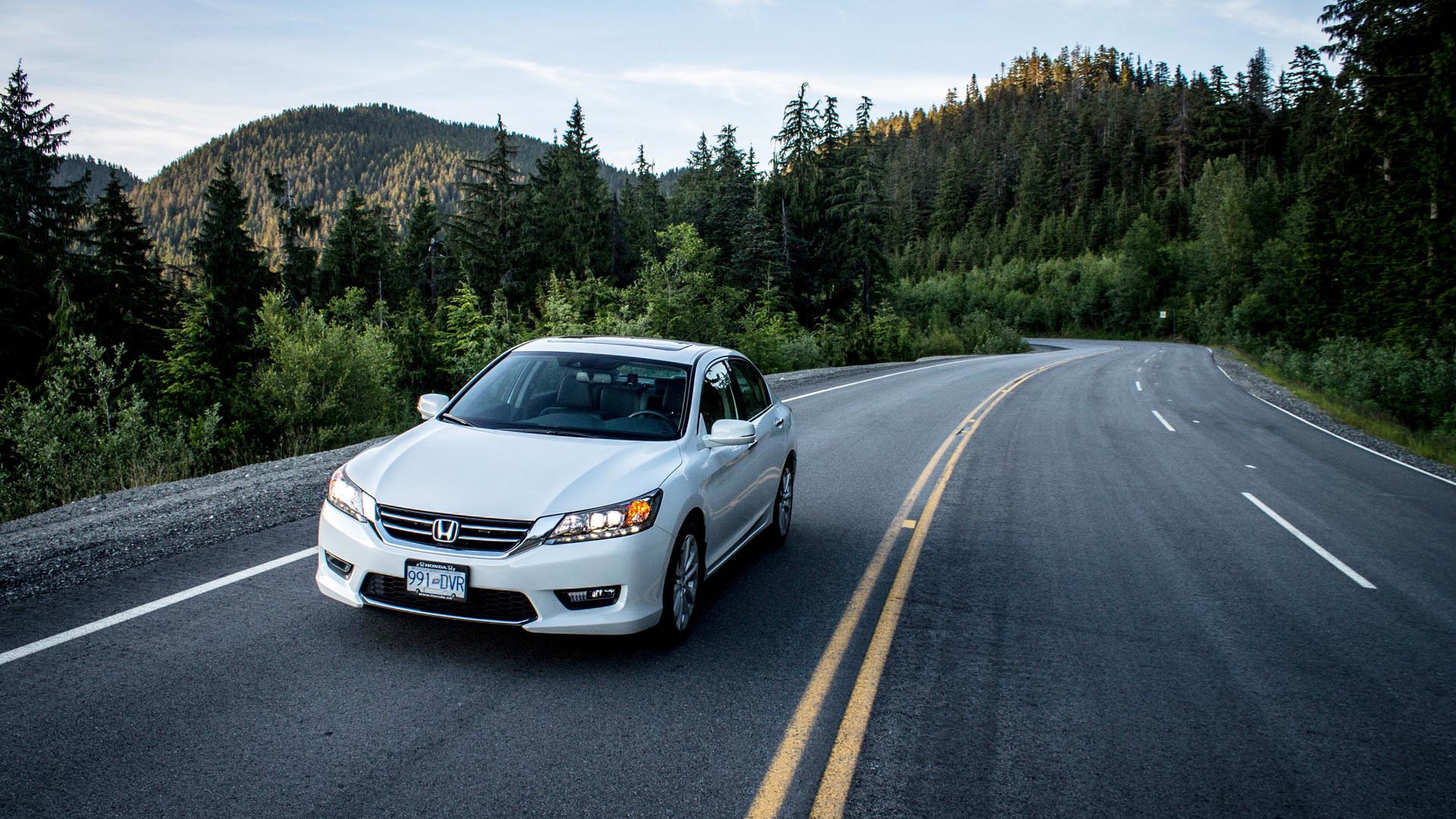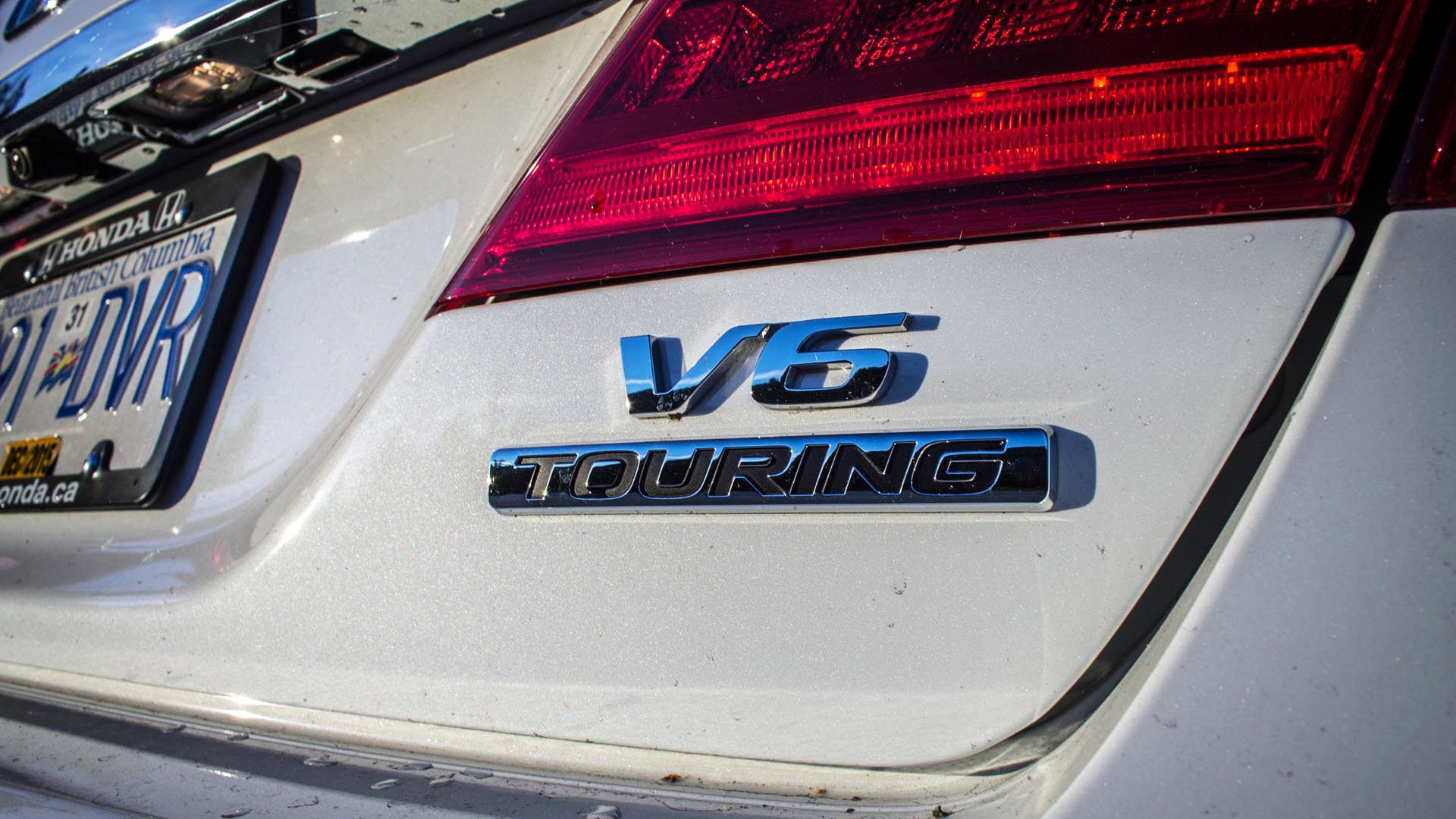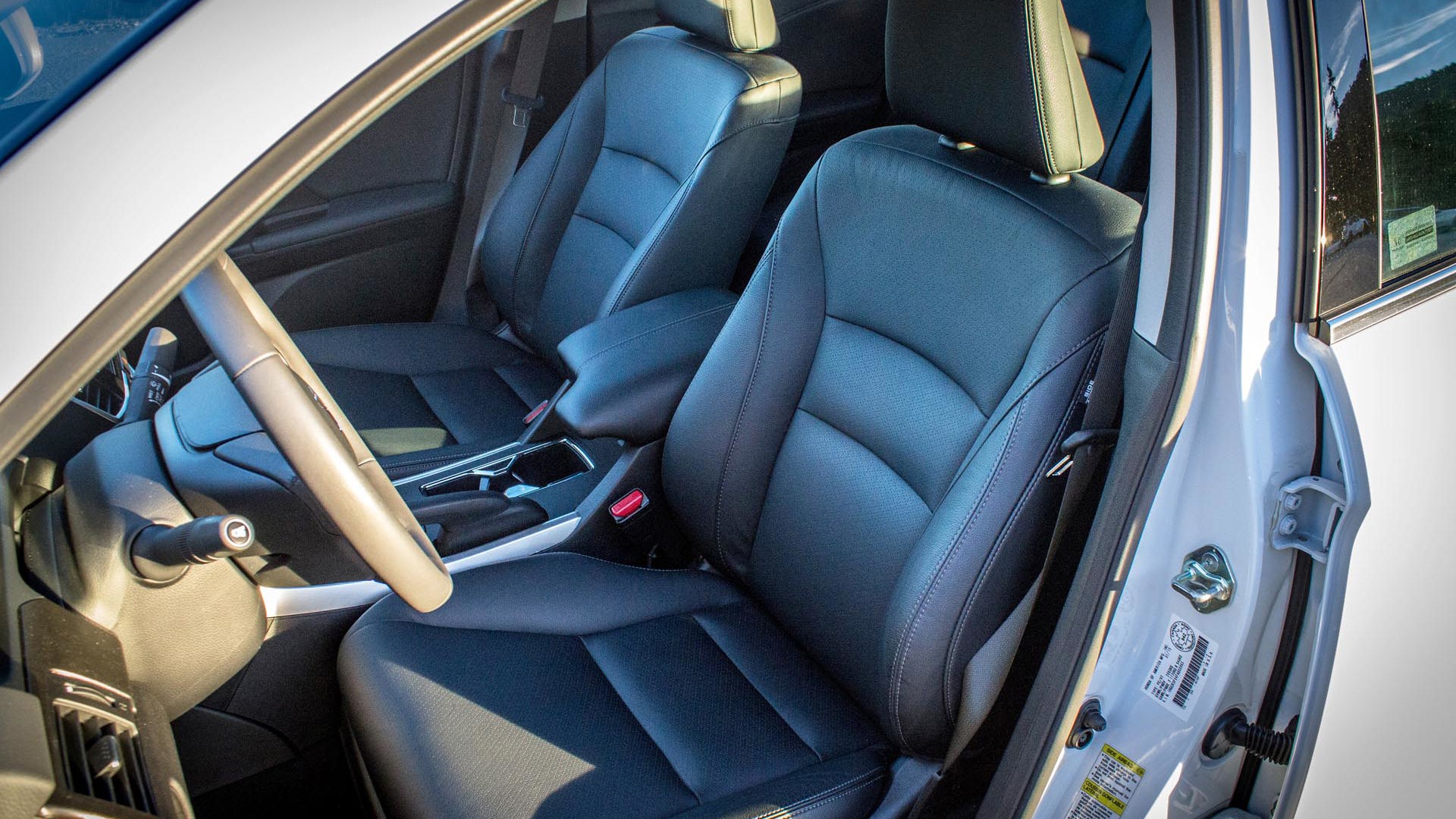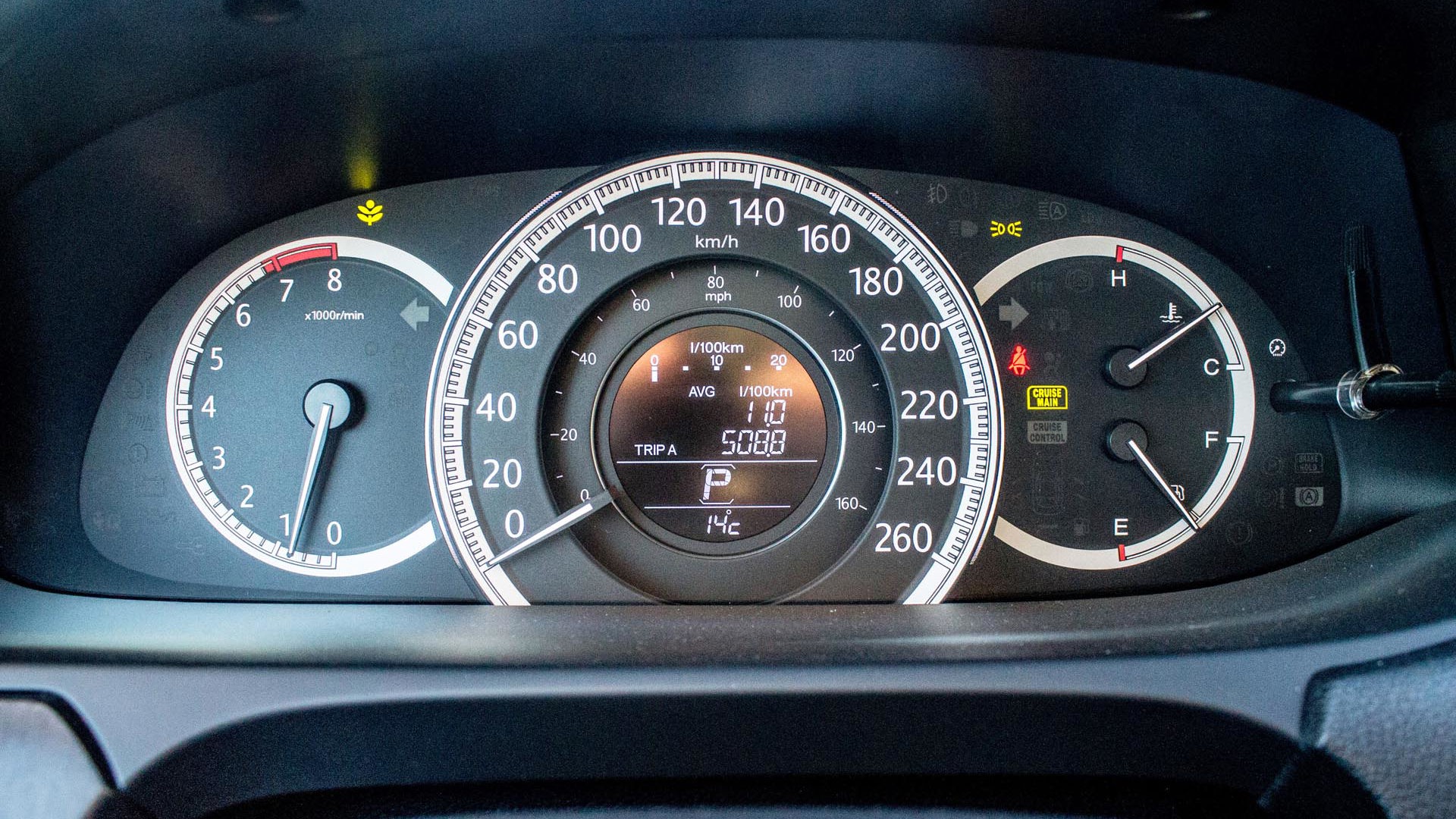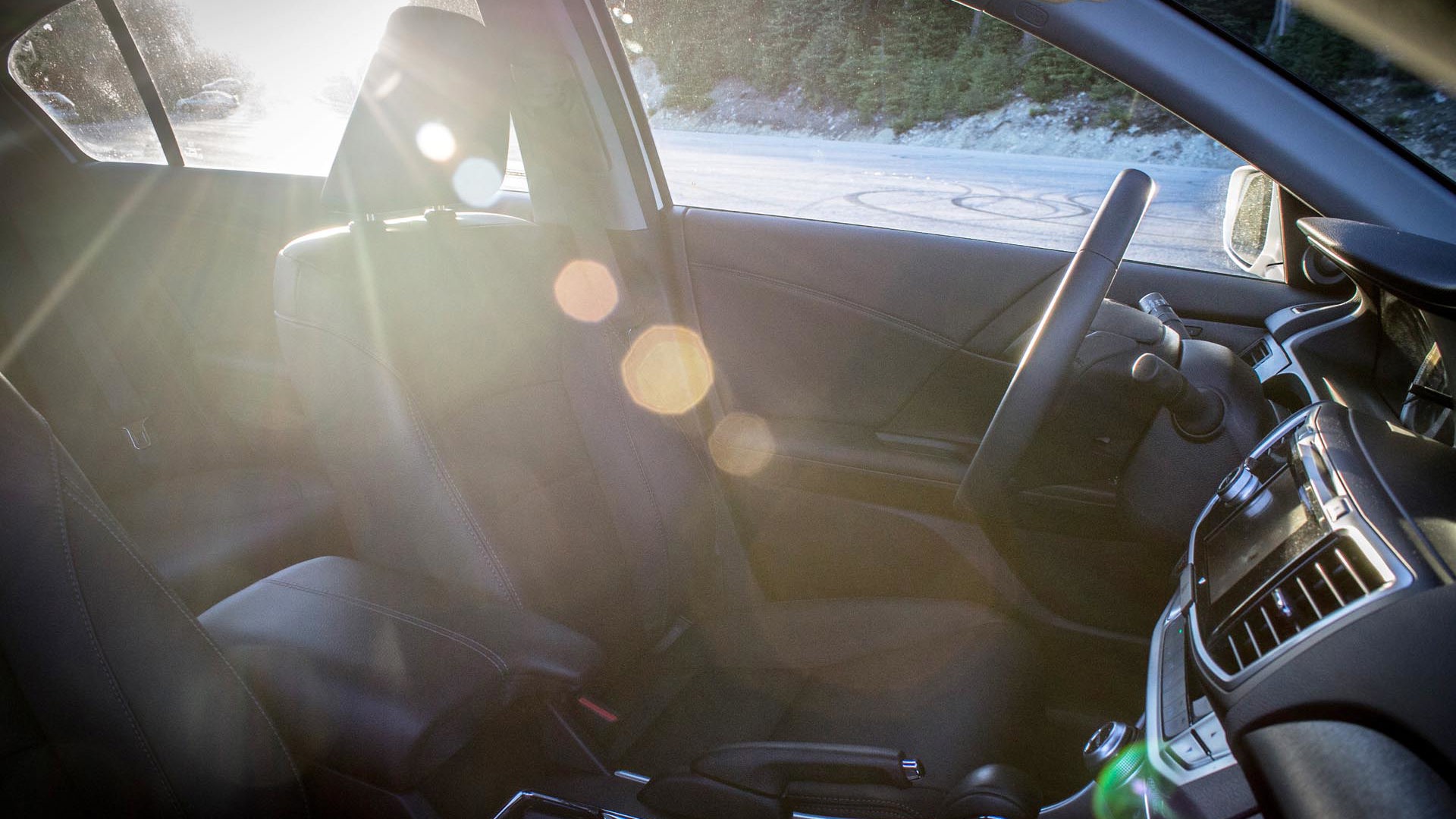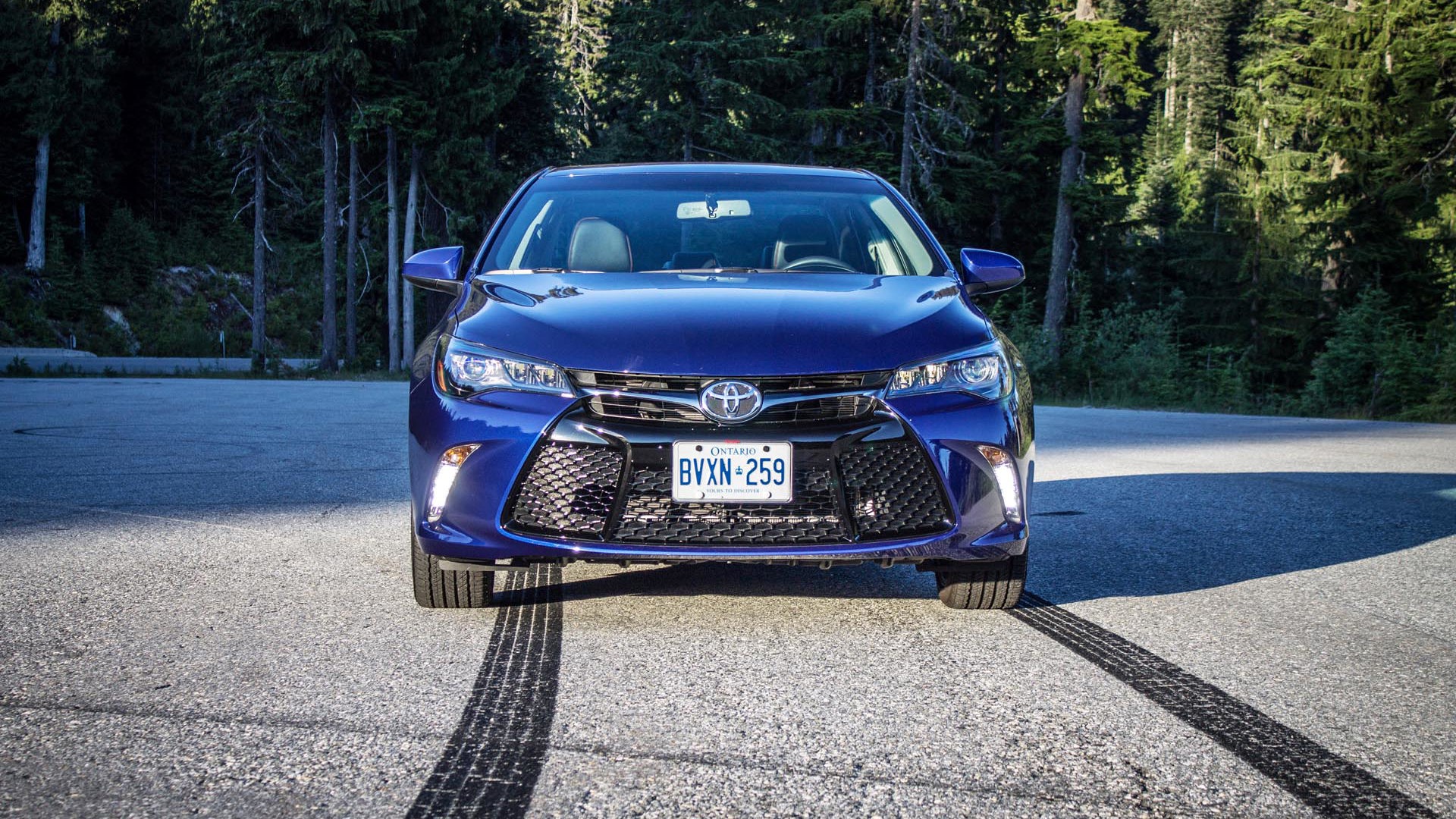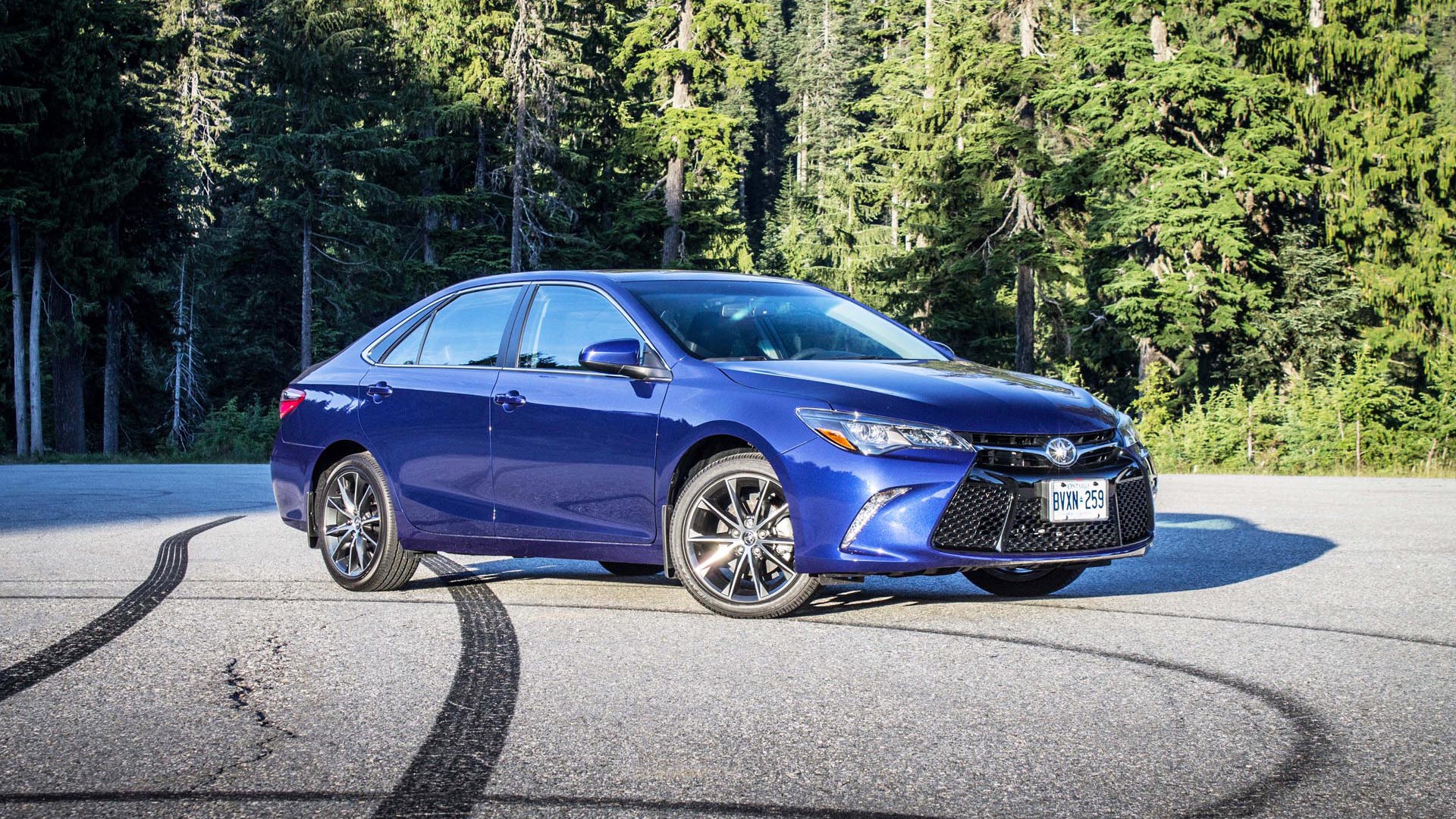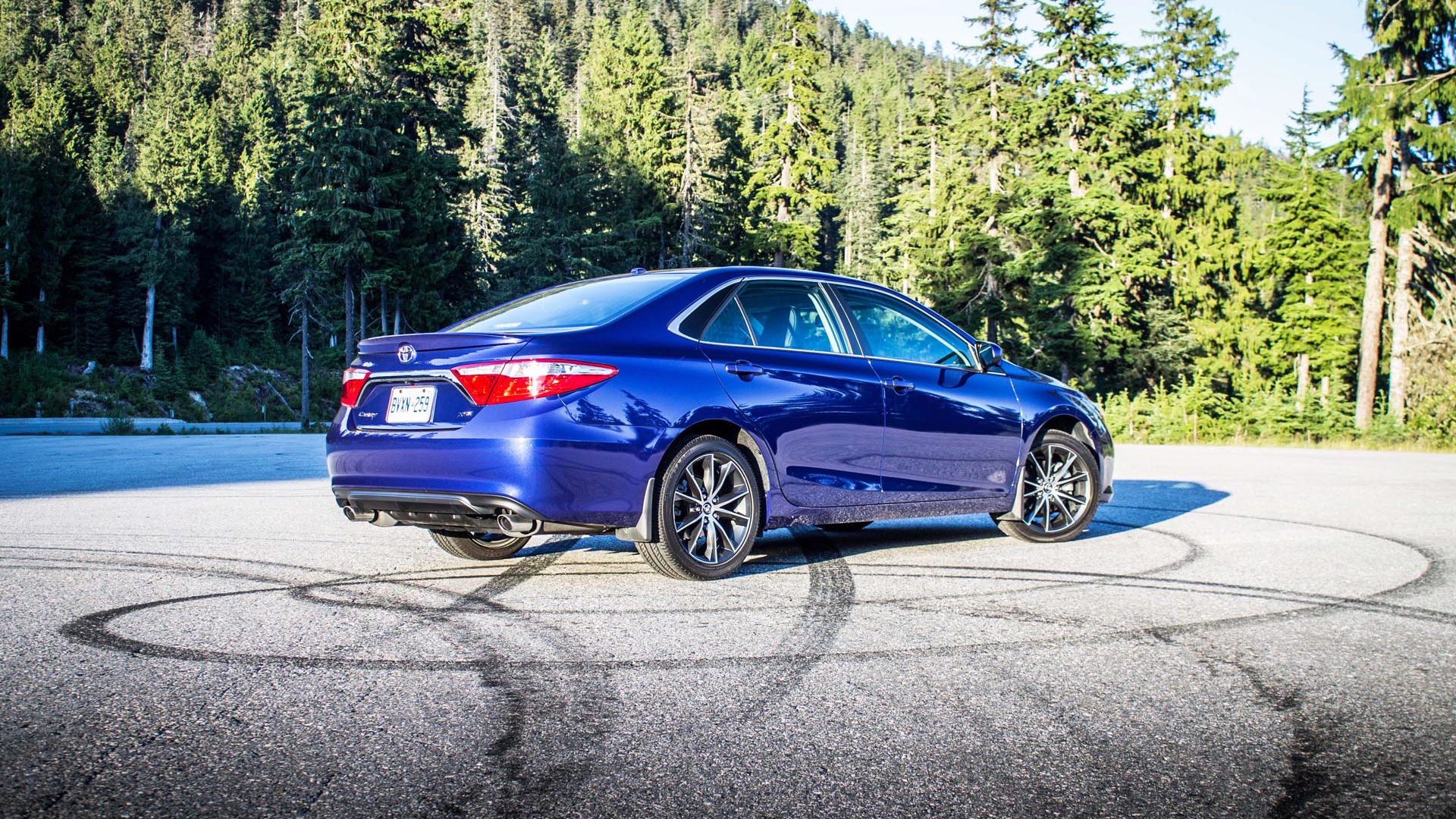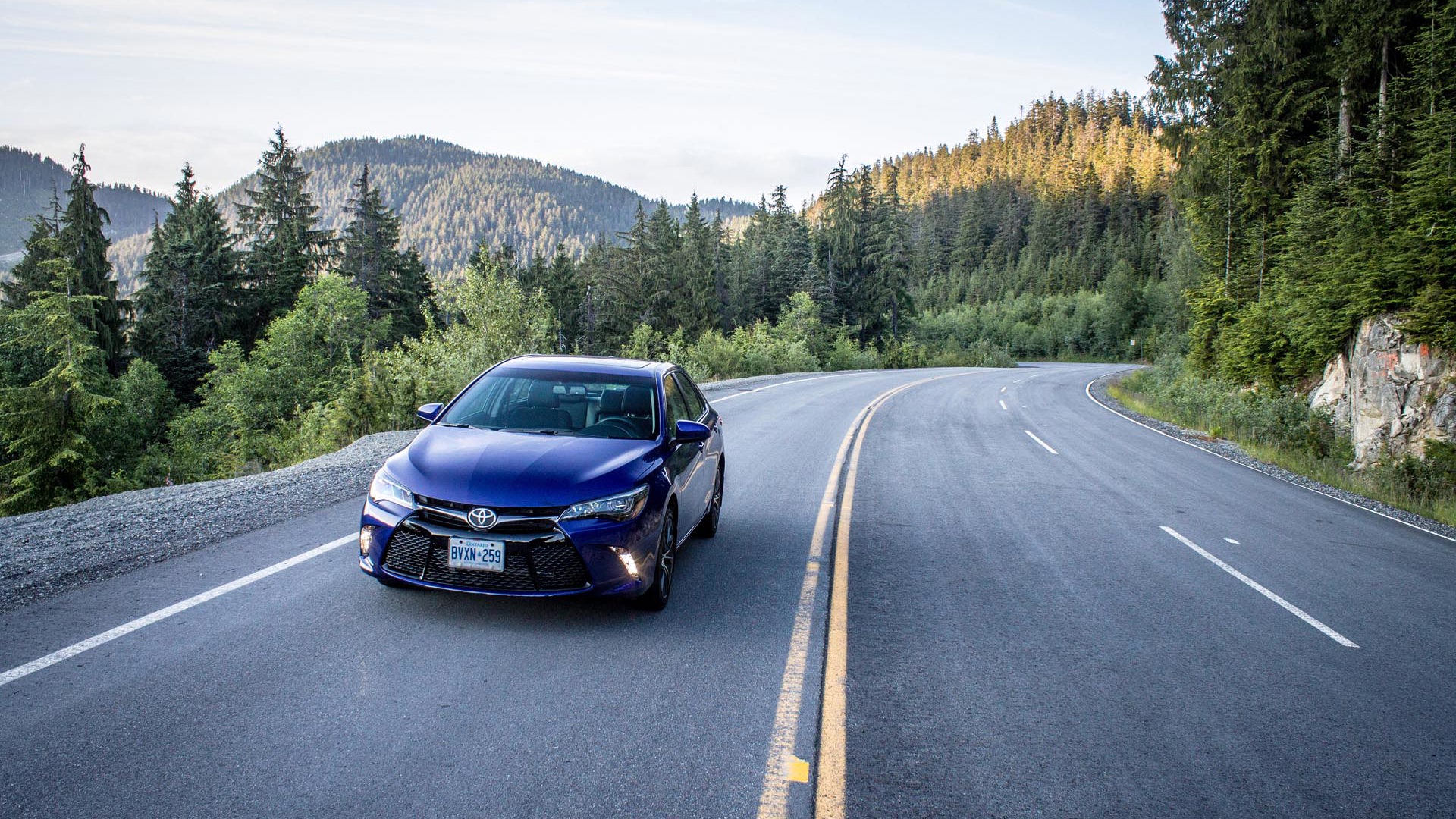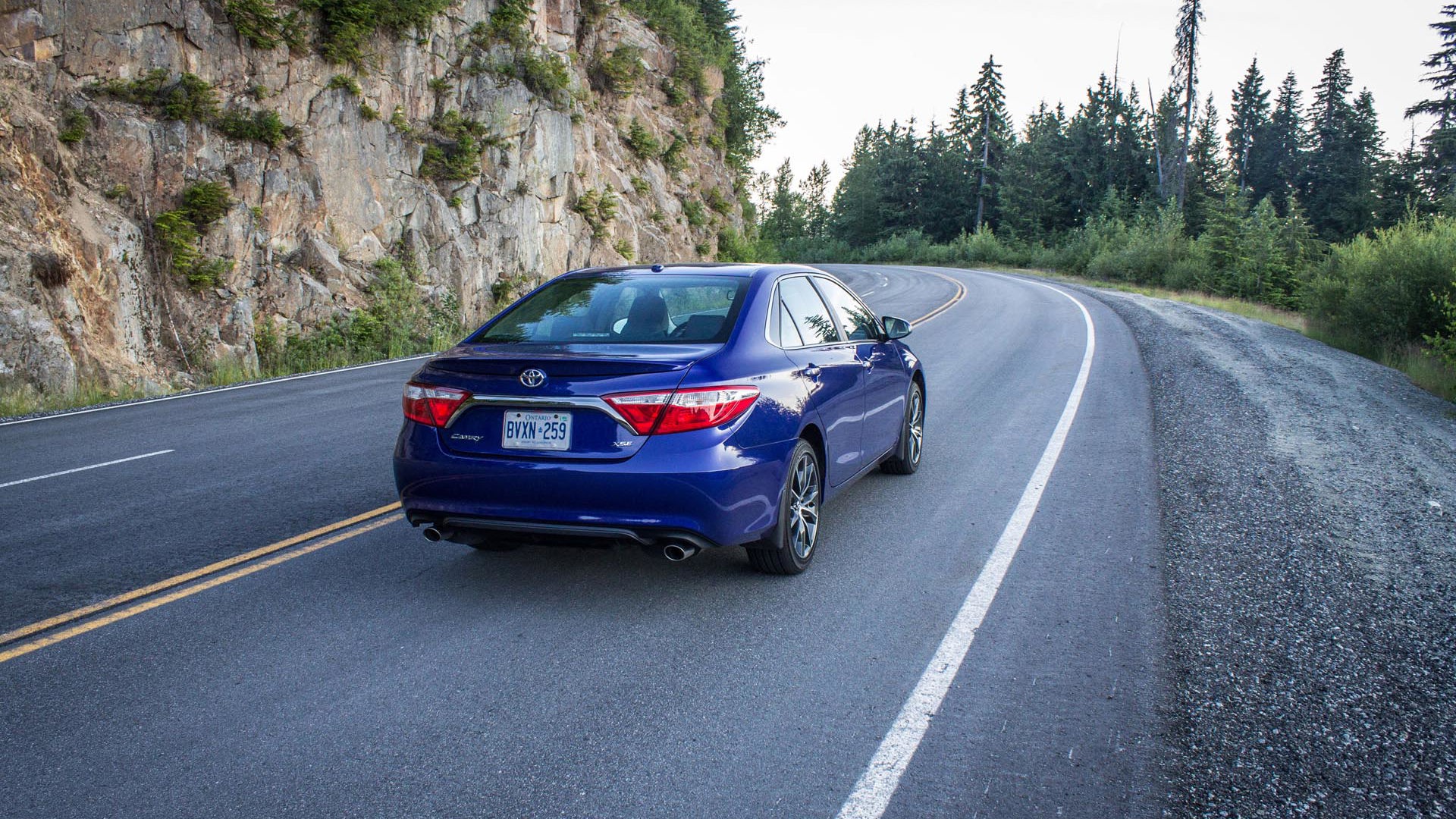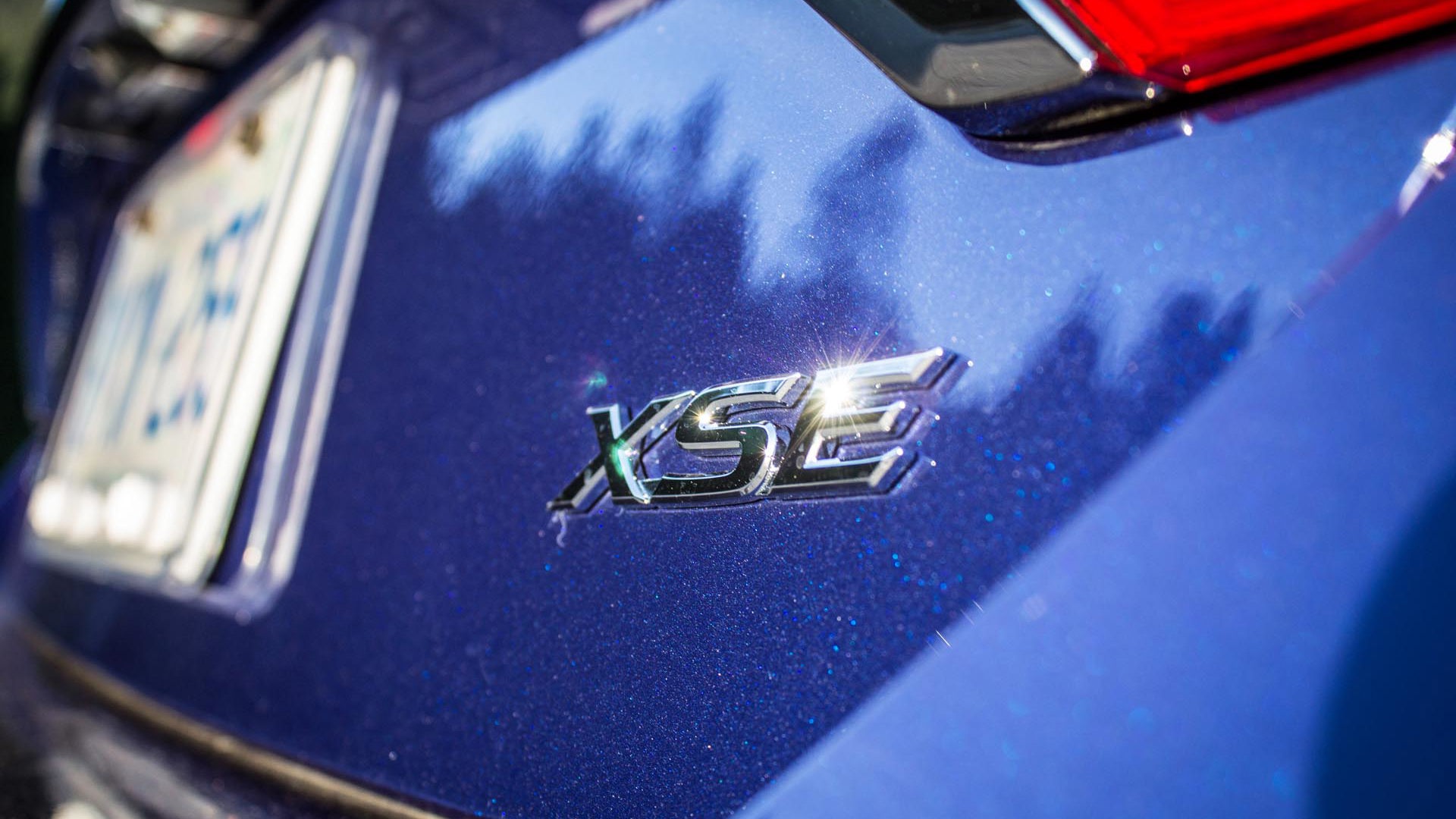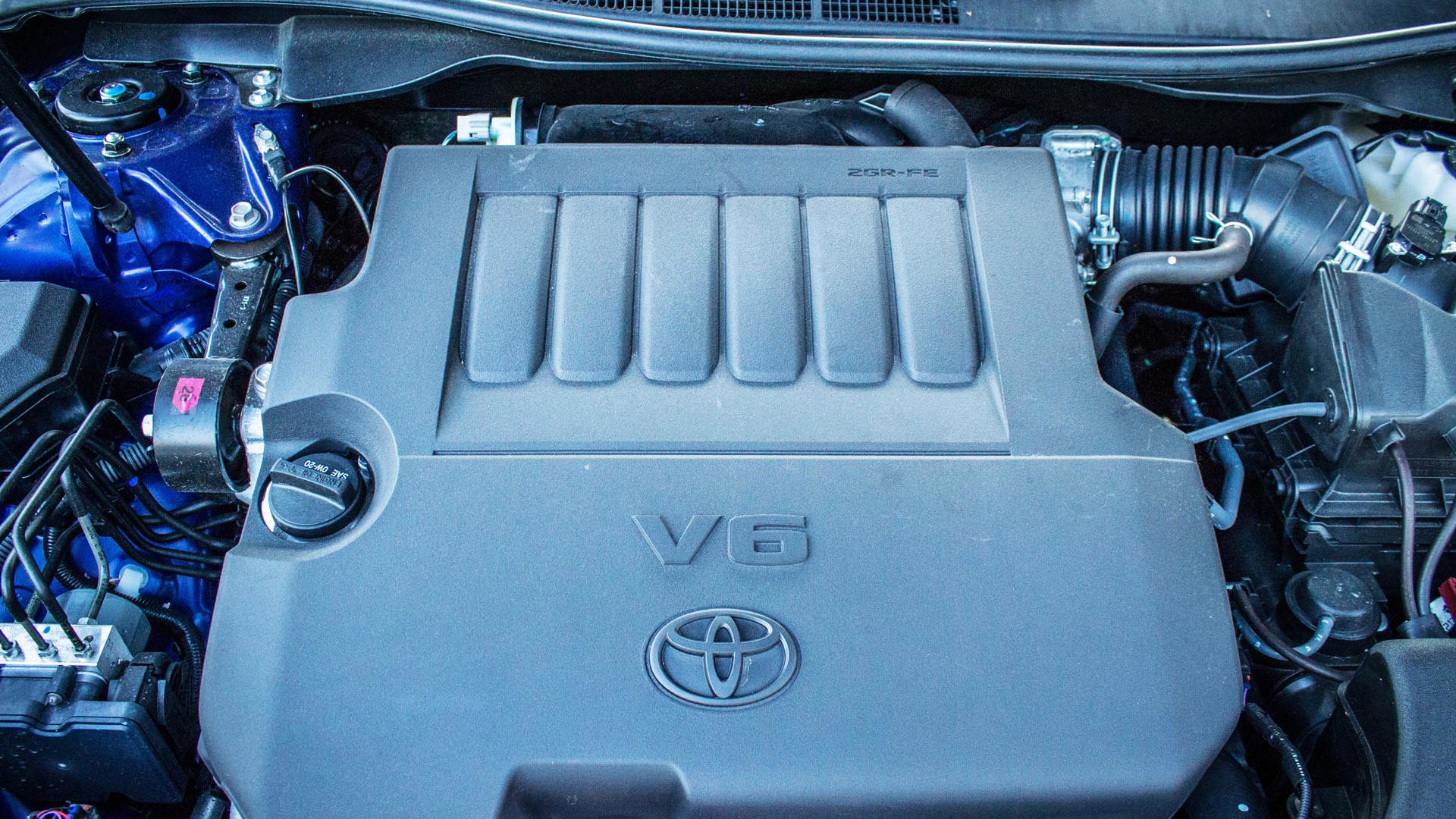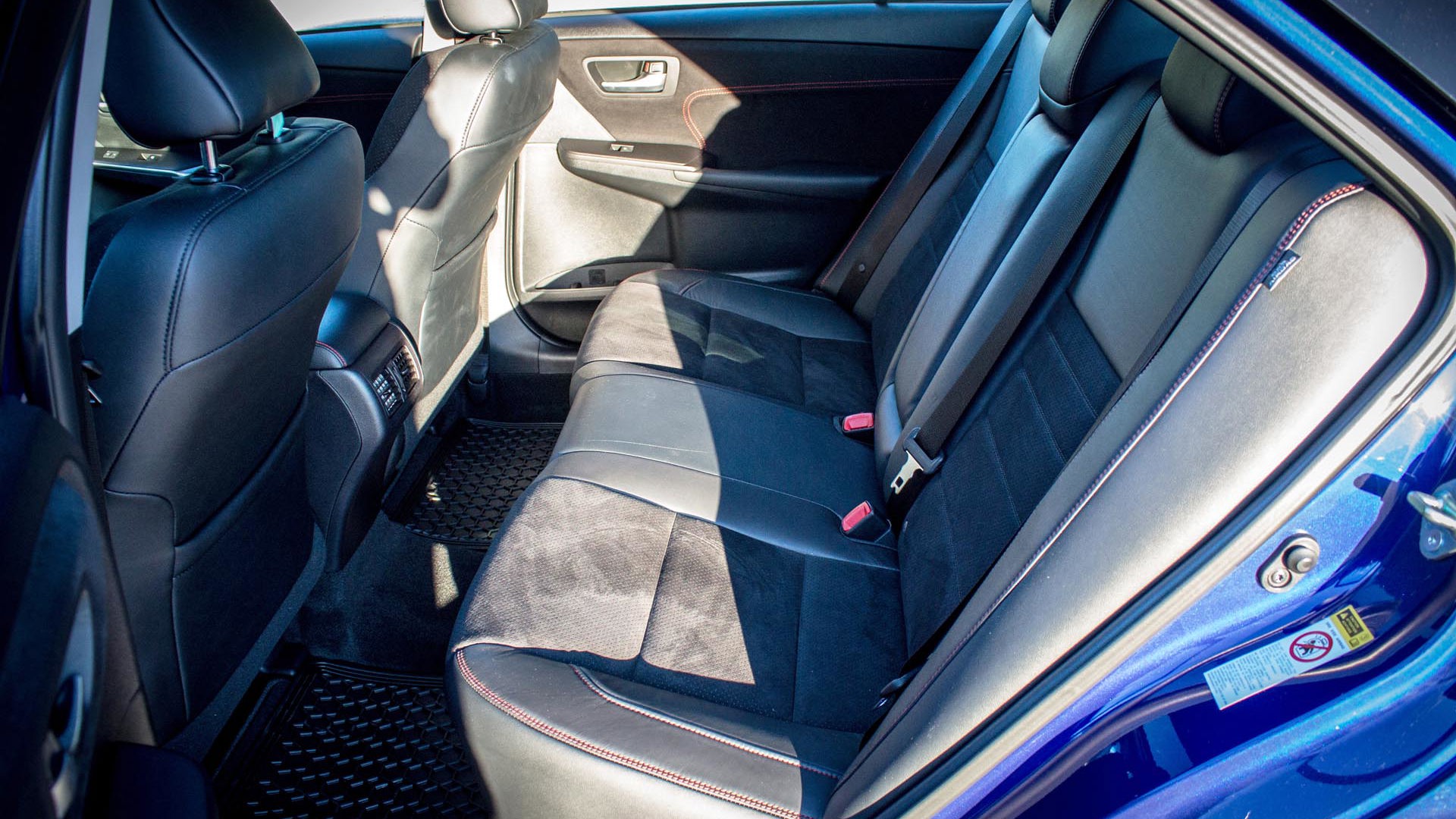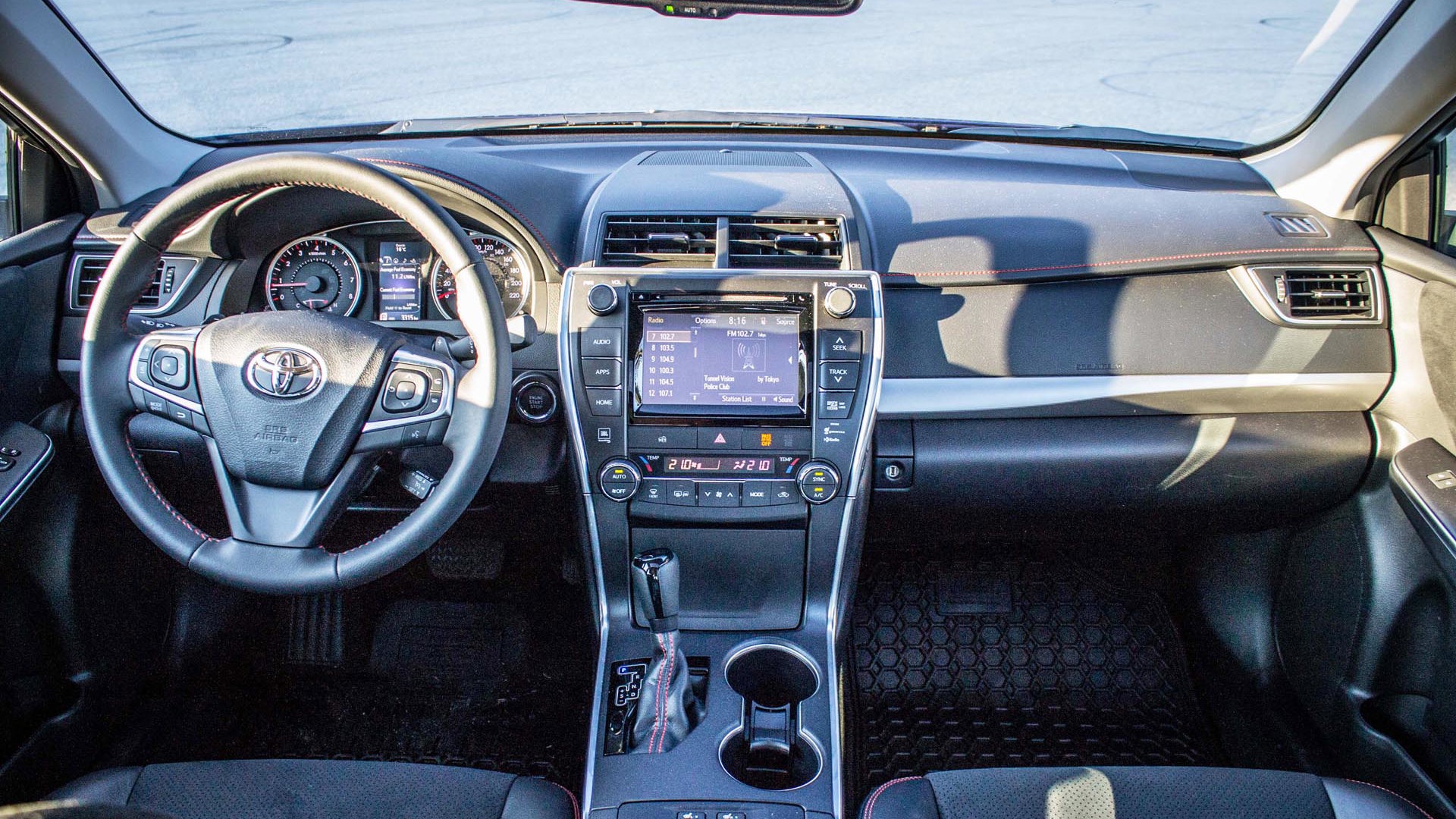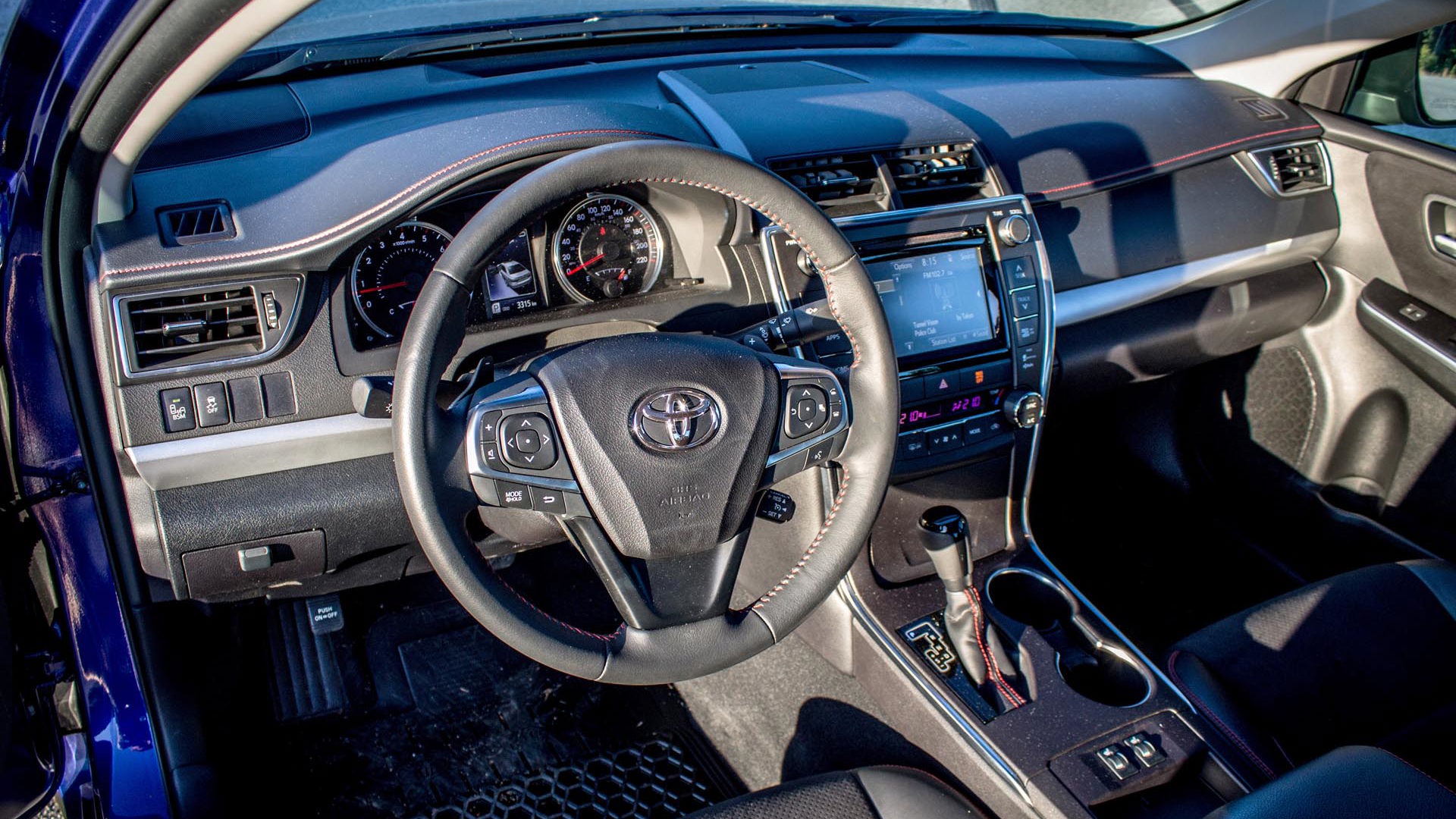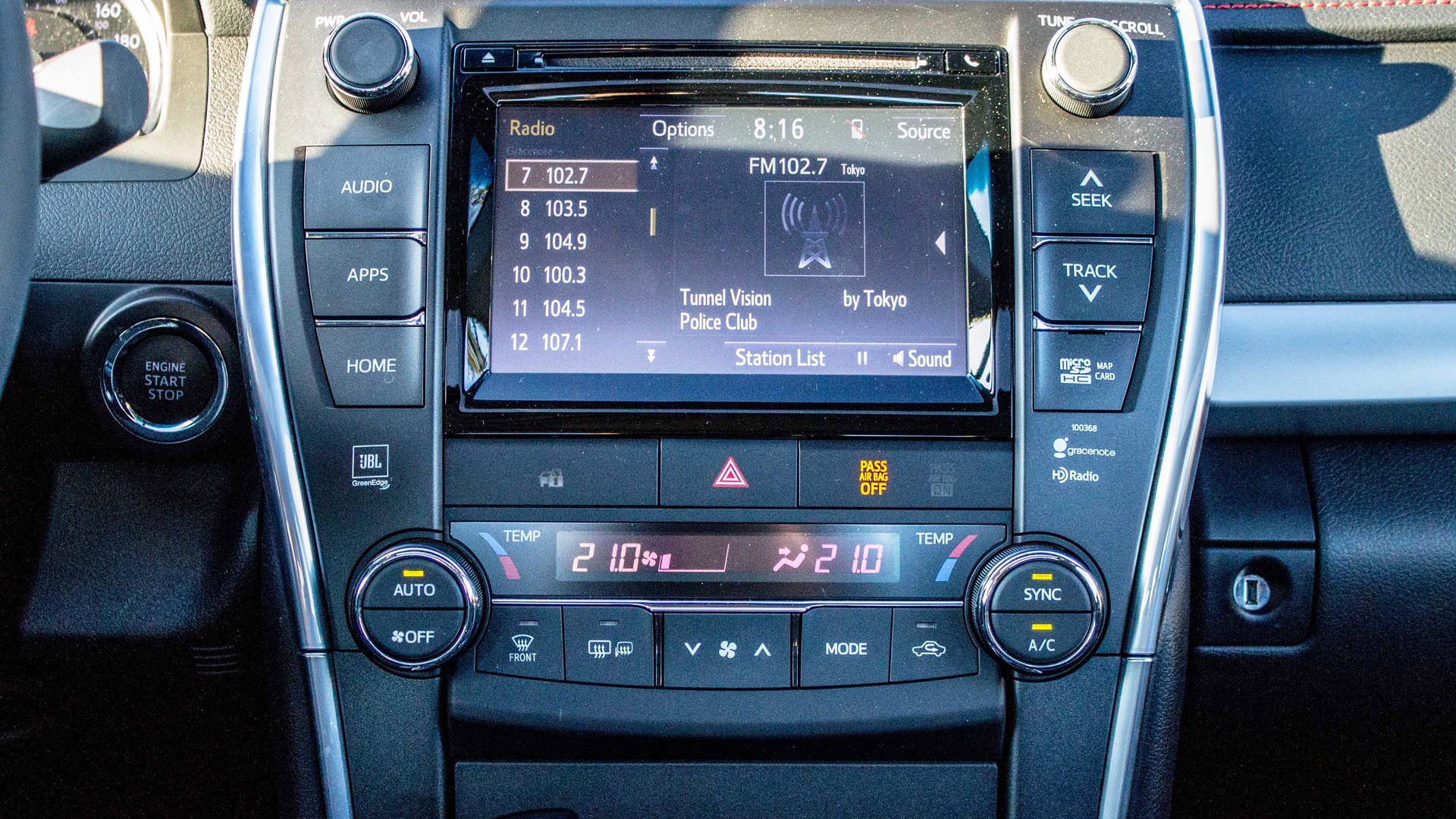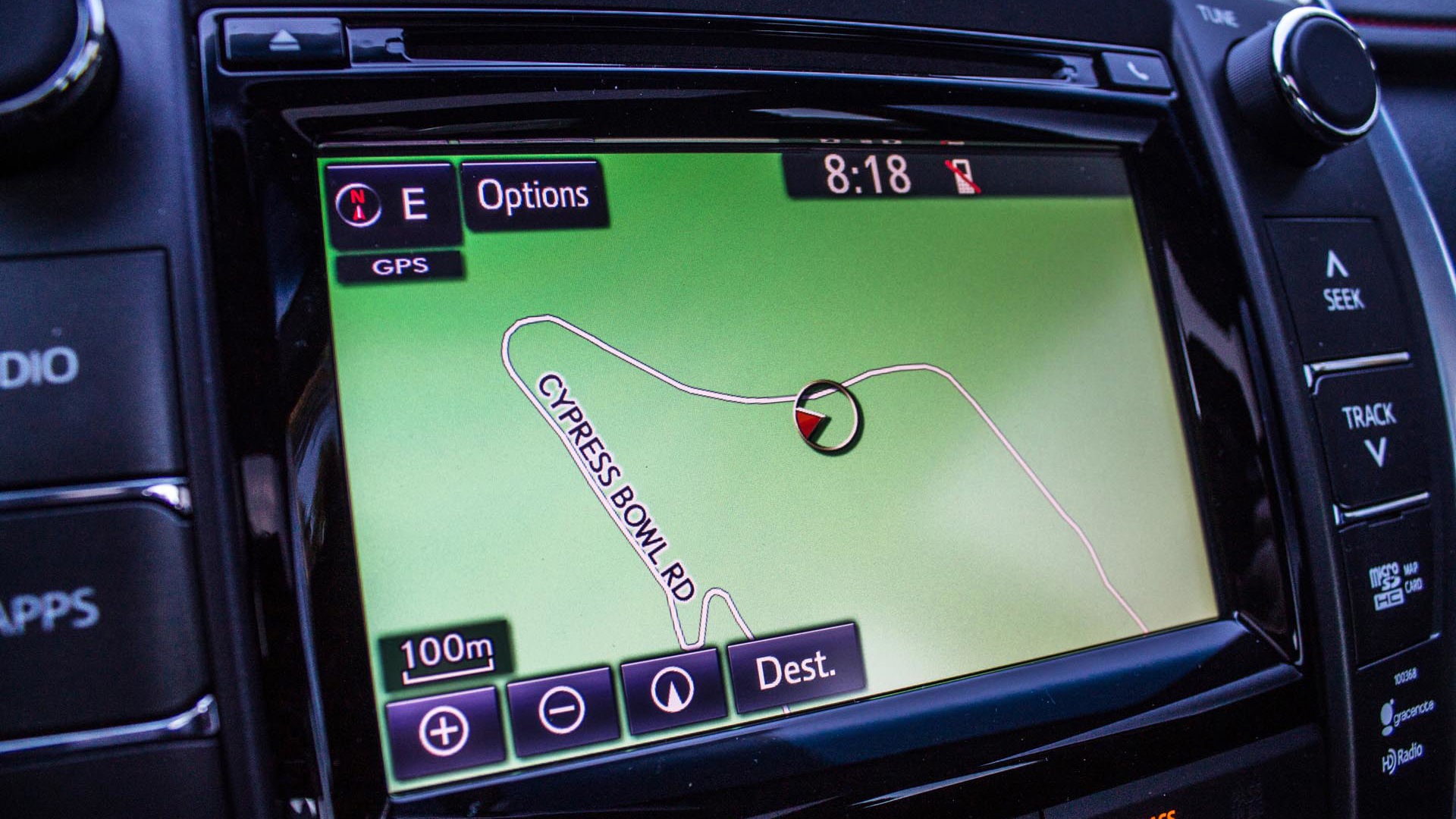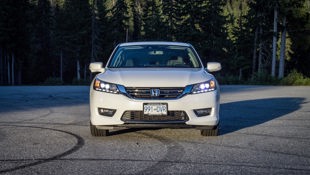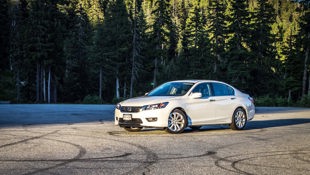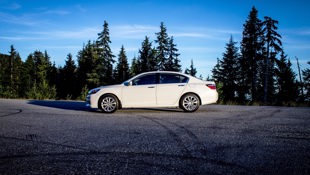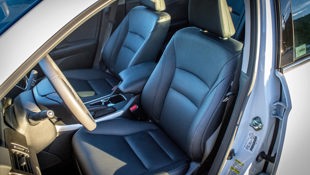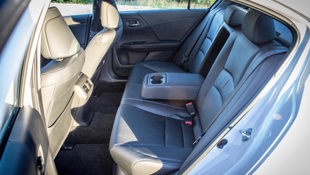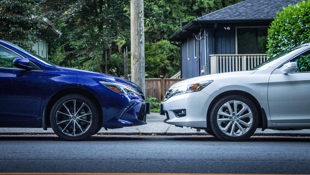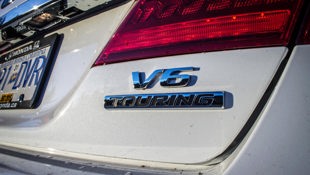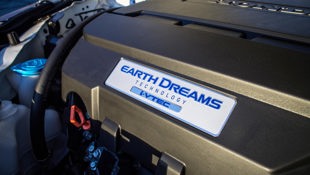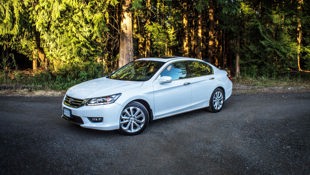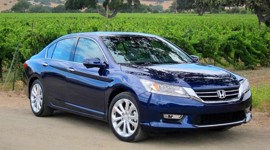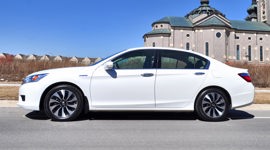Comparison Data
|
Base Price
$33,900
|
$35,630
|
|---|---|
|
Optional Equipment
None
|
None
|
|
A/C Tax
$100
|
$100
|
|
Destination Fee
$1620
|
$1820
|
|
Price as Tested
$35,620
|
$37,550
|
Either one of these bread-and-butter mainstream Japanese sedans could break Magnum PI's Ferrari over its knee and toss it in the trash. Kids who grew up in the cheerio-strewn backseats of Mom and Dad's day-to-dayer, dreaming of swelling red flanks and sumptuous louvres, can now buy, lease, or finance a four-door that'll roundhouse kick those adolescent dreams right in their mustachioed face. Oh well, at least KITT's still got turbo-boost.
What was once fast is now commonplace.
Yes, there's more to life than straight-line speed, but I think both would have the moves of the 308 in the corners too. Obviously the Ferrari would provide a more visceral experience, particularly the thrill of your bank account shrinking as the result of repairs brought on by any spirited driving, but the point remains. What was once fast is now commonplace.
Along with effortless speed, both the Accord and the Camry also bring luxuries that you used to only get in a BMW, space and comfort once only achievable in a Mercedes-Benz. The whole game has moved on.
So, which one's best? The newly redesigned Toyota Camry is fresher and fiercer-looking. The Honda Accord is a constant Canadian favourite. Regular folks can buy a lot of car these days, so which one should you go for?
Styling/Exterior
Well first, which would you prefer: quantity of style, or quality? Certainly the XSE version of the Camry has been liberally dosed with as much styling as possible. Remember that Simpsons episode where Homer invents the Makeup Shotgun? Well this is basically like that.
Giant grille! LEDs! Twin chrome-tipped exhausts! 18-inch machined-face alloys! If there were any more lipstick on this thing, it'd work at a hair salon in New Jersey.
The Honda, on the other hand, is a far more sedate proposition, even discounting the fact it's painted appliance white. Here too the LED mascara beneath the headlights is somewhat regrettable – mark my words, we'll look back on this trend as the 2015 equivalent of painting cars teal – but it's pretty much the single overdone piece on a car that is exemplary at being forgettably handsome.
It's certainly less exciting than the Camry. Mark it on the calendar – that's the first time anybody's ever said that about anything other than parliamentary debate. But let's not deride Toyota's sportiest mid-sizer too much: the gawping front grille (largely fake), does give this formerly milquetoast car something of the street presence of its Lexus co-cyborgs. It's even handsome, particularly in the metallic flake Blue Crush.
Dress both cars in black, and the Accord would look like evening wear to the Toyota's sport casual. The former won't go out of style as quickly as the latter.
Comfort/Interior
Of course, showing off to the neighbours isn't what buying a well-contended Japanese mid-size is really about; no, for that you need a leased four-cylinder Mercedes with a badge like a manhole cover. Instead, leather seats and a non-premium badge speak to a far less showy demographic. Maybe the kids are finally out of the house and the reduced monthly internet/laundry/food bill meant you could move up a peg when you traded the old girl in. Er, your former car I mean.
Despite claiming sportiest status, the XSE's seats and overall environment are pure Camry. Yes there's red stitching on the dashboard, shifter, seats, and steering wheel (more lipstick again), but the seats have only modest lateral bolstering. You very much sit on top of them rather than in them: a kitchen chair rather than a racing bucket. Even so, the alcantara inserts help the driver stay planted during higher lateral g loads – more on that later.
The interior of the Accord is a far less interesting place, though the seats have the bolstering the Camry lacks. It feels nicer than the Toyota, with a better job done of hiding the cheaper plastics. It is somewhat dour and cheerless in here, and the steering wheel looks like a happy android, but if we were scoring merely on some theoretical “niceness” scale, the Honda is better. Also, why must every single Toyota product I've ever driven have button-blanks indicating some feature is missing? This XSE is top-of-the-range, so what's absent? Photon torpedoes?
However nice it might be, Honda's interior gets several large demerits for irritation. First of all, the dual-screen infotainment is a jumbled mess. It's like when you go over to someone else's house and they have three remotes to get the big screen going. Which button does what? Also, no split-folding rear seat? What is this – North Korea? We demand our split-folding rear seats! 60/40 or fight!
You won't split these two on backseat comfort or space – both are huge in terms of legroom and headroom, the sort of stuff that'd qualify as a limousine a coupla decades ago. However, and as expected, the Camry has a few extra mm in both dimensions.
The Toyota's Entune touchscreen and instrument cluster screen aren't flashy, but they are effective. The rear pass-through is much larger, and the seatbacks even have hard plastic coverings, allowing long objects to slide in better. It's almost like somebody at the Toyota design centre visited an Ikea once.
Technology
As mentioned, both these cars have relatively powerful navigation and infotainment systems, though the Toyota's setup is much easier to use. Not until Honda brings their next-gen system (as seen in the Pilot) over, will the Accord be its rival's equal.
However, the Accord isn't without its clever touches. The passenger-side blind-spot camera is excellent; activated by using your turn signal, it's the kind of thing I'd like to see in all cars as camera technology becomes more prevalent and compact. Except BMWs obviously, that'd be pointless.
The multi-angle rearview camera is great too, customizable to your particular parking space, though the Accord's camera-based systems mean no conventional blind-spot monitoring is available. Further in the safety field, the Accord also comes with a handy forward collision warning system.
The Camry has your back with conventional blind spot and cross-traffic alert, and the wireless induction charger in the centre console is a neat feature. However, the reason it wins this category isn't for any forward-looking features, but simply because the technology it contains is straightforward and easy to use. That's what Camry buyers like. What most buyers like, come to mention it.
Performance
The main problem in left-foot braking the Camry to get it to cut deeper into a corner is – wait, wait. This is ridiculous. “Left foot braking.” “Camry.” “Corner.” Just who am I trying to kid?
Go ahead, walk on the loud pedal of any Camry with the recent 3.5L V6 and prepare to be surprised. The major magazines put the old V6 SE within a few tenths of what an Ecoboost Mustang will do in the run to 100 km/h, and it'll clear through the quarter-mile in the low 14-second range. When I was a kid, I had a tuned MX-6 that'd just about do the same assuming all the vacuum lines held together, and I thought it was pretty hot stuff.
That's 268 hp at 6,200 rpm, 248 lb-ft at 4,700 rpm, and the clink of cold steel around your wrists in just a few seconds of sustained acceleration. Toyota bolts this powertrain to a conventional six-speed transmission, and then tucks it under the hood of a sedan boasting more spot welds and thus greater rigidity. The XSE designation adds in a stiffer sport-tuned suspension, and thus we find ourselves mid-corner at speed on a mountain road, bringing the left foot over to transfer a little weight forward and get that front end to bite.
Instantly, there's total power cut – you can thank that whole unintended acceleration business. Mind you, this is only really a useful buying warning for Finnish rally driver Erik Carlsson, and he is sadly no longer with us.
Suffice to say that the new Camry corners in the same way it accelerates: with surprising competence. Yes, the steering is numb, and yes, the tires lack ultimate grip, but the capability is there. It's not really much fun though, more the feel of a very competent highway car set up to handle long sweepers at speed.
The Accord, on the other hand, rolls more, but drives like the guy who engineered the suspension did so while wearing a T-shirt reading: “I [heart] Soichiro.” It feels lighter on its feet than the Camry, and less prone to give up grip.
Under the Honda's nose there's also a 3.5L, but here it makes 278 hp at 6,200 rpm, thanks to a little VTEC bump. Torque is nearly identical to the Camry's, rated at 252 lb-ft at 4,900 rpm. The transmission is also a conventional six-speed automatic, unlike the four-cylinder Accord’s silky CVT.
On paper, they're very similar cars, but the feel is quite different. The Camry's pretty quick, but maybe not all that happy about being hustled. It's predictable, and capable, but not hugely fun.
The Accord, however, does egg you on a bit. I'm not sure it's actually any more invigorating than the Sport model with the 189-hp 2.4L four-cylinder engine (the sweet spot in the lineup for Honda fans), but it is just as quick as the theoretically sportier Camry. It, too, is a big car, but drives a bit like those little scrappy Hondas of yore.
But again, let's be serious here. Actual sport is less what the average shopper of these two is considering, and more a sporty look. Comfort and quiet are of more importance every day, and here the Camry does have an edge. Because of the Honda's variable displacement engine, you don't quite get the full buttery-smooth V6 experience. Despite the Camry's 18-inch wheels and sport suspension, it's still the more polished experience.
Value
When either one of these cars has a four-cylinder in 'em, the decision can come down to dickering over the monthly payment; it's not the MSRP, it's the monthly outlay, and you know the big players keep a close eye on what their rivals are doing to push metal out the door.
With the ever-rarer V6 option – a motor configuration on borrowed time – the purse strings get a little looser. Both these cars are priced in the mid-30s, and while both have strong resale values and often quite competitive rates, I don't think many people will be swayed either way by the Camry's slight pricing advantage.
Still, there it is: the XSE Camry is a couple thousand dollars cheaper than the top-flight Accord. You won't split them much on content either, as only a few tech features differ.
Almost too close to call, and the fuel economy ratings don't help either. The Camry fetches 11.0 L/100 km city and 7.7 L/100 km on the highway, where the Accord is identical in the city and supposedly 6.8 L/100 km on the highway. Both hovered in the 9.5 L/100 km range in mild weather.
Conclusion
As for a winner, though, that's not too close to call. The Accord's the better driving and looking car, but the Camry is more sensible and practical, and fast enough to earn its XSE moniker. It's also relatively free of minor infotainment foibles, has a proper folding rear seat, and is a smoother drive.
Honda hugely improved the Accord when they changed over to the current model, building a car that felt closer to the brand's principles than we'd seen in years. As much like Emperor Zurg as the Camry XSE looks, it too is true to its parent brand's ideals: quiet improvement, expected strengths, competence, don't rock the boat.
If you want the best driving car, well, buy the stick-shift four-cylinder Accord and save yourself some money. But if you want a V6-powered mid-sized sedan, the new Camry's ahead by a faux-grilled nose.
| 2015 Toyota Camry XSE V6 Warranty: 3 years/60,000 km; 5 years/100,000 km powertrain; 5 years/unlimited distance corrosion perforation; 3 years/60,000 km roadside assistance |
| 2015 Honda Accord Touring V6 Warranty: 3 years/60,000 km; 5 years/100,000 km powertrain; 5 years/unlimited distance corrosion perforation; 3 years/unlimited distance roadside assistance |
